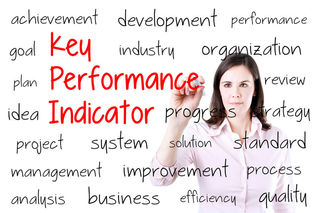 Not so long ago, Tom, one of the executives I coach, told me he had a problem with one of his staff members, Alan. (*) In Tom’s perception, Alan had difficulties setting priorities. Not knowing Alan at all, I had to disagree with Tom. What Tom really meant was that Alan’s priorities did not match his. You can’t function without priorities, you always have to do something first, even if you do nothing at all. So how does this work? First, in your unconscious rulebook for setting priorities, is your values. Values determine the sequence in which you take action. Unfortunately, most people get values wrong. Often, they have read the wonderful 7 habits book by Stephen Covey, and think they can decide which values to have. That’s not how it works. The values that you choose in those exercises are your noble view on who you would like to be, but the underlying truth is very different. We spend quite some time on our Licensed Master Practitioner training to teach our students how to find out what your real unconscious values are. Values are the first hurdle where things go wrong, because at work we play DJ with no less than 6 potentially different sets of values: Our own unconscious set of values – who we are Our preferred set of values – who we want to be The values our company wants us to have – who the organization wants us to be The real values of our company – how the organization really behaves The unconscious set of values of our boss – who our boss really is The preferred set of values of your boss – who your boss wants to be No wonder Alan gets confused about his priorities, especially when there are big gaps between those sets of values. And this is only the first step, priorities are not everything. Alan also needs the skills to execute a particular task, and – equally important – believe that he has this skill and believe that it is possible to do it. But let’s continue to focus on priorities. There is still another system that can mess up our priorities, and that system is driven by your emotions. If stress or anxiety takes over, values will not help Alan. His priorities will be taken over by the unconscious mechanisms that try to reduce stress. The unconscious falls back to habits that the unconscious believes to be the answer to stress: eating, spending time on Facebook, cleaning out the email inbox, taking a cigarette break etc. To the outside world, it will look like Alan is distracted and wasting time, while Alan is trying to do what is currently most important to his system: reducing stress. So how can Tom deal with all of this so that he gets Alan to execute his tasks in alignment with the needs and strategy of the company? First thing is to find out what’s important to Alan in his work. This will give you some information on Alan’s intrinsic values, as well as some indicators on what might potentially stress Alan. I showed Tom some conversation techniques and meta-model questions to use. Second thing is to make sure that Alan has a grip on his stress. There are two things that Tom can do here. One is to make sure that he does not unnecessarily put high stress on Alan. Second is to provide opportunity to Alan to better manage his stress, e.g. through stress management courses, provide sporting facilities at work etc. It is, however, Alan who needs to gain control over his emotions. This means that when Tom has put everything in place, it is still Alan who needs to take the initiative. Third thing that Tom can do is to make sure that he is as clear as possible about what it is that he wants to achieve. Identify where he and his team are now with regards to this objective and how exactly Alan can contribute to get the team closer to their goals. And those 3 things are exactly what Tom did. He had his conversation with Alan so that he had a better understanding of his motives, needs and values. It gave Tom the indirect feedback on how to better manage Alan. Tom also organized several sessions for his team on how to deal with stress and agreed with HR to negotiate a special discount with a local fitness club for all employees of his company. In addition, the company pays half of the subscription fee. Tom also increased his communication efforts towards the whole team. He does spend a lot more time preparing his communications, but according to Tom the effects are worth it. (*) Names have been changed for reasons of confidentiality.
0 Comments
By Adrian Brown
I was speaking with another NLP Trainer a few weeks ago and the subject of people thinking that they know it all came up. This is often a barrier to learning that we often notice in others but don’t see in ourselves.
For example, I often meet people who say “NLP? I know all about that” and I always think “Oh really, you know all there is to know?” I once met a Director of an organisation who said her staff were all NLP trained and showed me their training manual. There were only two pages on NLP, one on representational systems and one on rapport. This is a good start but the staff had the idea that this was everything, they didn’t realise there was a whole lot more. In the learning model, this is described as Unconscious Incompetence, you don’t know that you don’t know. The material is out of your conscious awareness. My point being is that people often think that they are aware of everything there is to know about a subject but often fall far short of what they could really achieve by not going further with the knowledge. Most areas of learning are like those Russian painted dolls that, when opened, have more inside. I’ve found this with nearly every area that I’ve looked into: many people actually know little about a subject that they think they are well versed in compared with what they could actually know. It seems like there’s a paradox here, the more you find out about a subject, the more you become aware of your lack of knowledge. Take driving for example. Many years ago I and a colleague went on an advanced driving course and were amazed by all the additional things we were told about observation, acceleration, braking, weight distribution etc., none of which had ever been mentioned by the driving instructors who originally taught us to drive. After passing this course, we then went on to do further driver training and yet more was added and so it goes on. So really, you never know everything, just enough to pass the current test you are taking or meet the higher standards that you have learned. So what has this got to do with NLP and coaching? One of the things that often comes up in people’s lives is that they are bored with what they are doing. They have done it for so long that they think that they have it all worked out and it’s no longer a challenge. Many coaches would suggest maybe a change of career or to enter into a different specialisation, but what if this is too radical, maybe we can just take a new look at what we are already doing. How about applying this to ourselves? One of my own mentors once asked, “How can you add a new freshness to what you’re doing?” Great question. When I learned more about driving, I started to really enjoy driving again, so where else can we apply this? Just for fun, let’s take a look at something you do so often that it's now become second nature, something you do really well but mostly unconsciously and let’s see if there’s more to learn. This is often highlighted when people say, “I’m still very interested in the subject, but I’m quite bored by it." Then find out what you don’t know that you don’t know. By the nature of the question, it will take a different approach to what you usually do so here’s some ideas" The most obvious step is to find out if there an advanced course in that discipline. What often happens on more advanced courses is that they throw out what you learned at the most basic level in favour of a much more effective approach. There’s always books and DVD’s, presentations from conferences etc. where leading authorities often present a different view than what’s presented in the mainstream. What is thought of as common knowledge often changes immensely over the years so, are you actually up to date on it? I once spoke to a paramedic about the changes in emergency health care. Some of the procedures have changed so radically that they are in effect the reverse of what was being taught ten years ago. Also, ideas that were once thrown out are being brought back in. So knowledge is sometimes cyclical but we often act as if it’s set in stone. If you think that you are already at the cutting edge, how about looking at the really old books on the subject, often there are nuggets of great wisdom in there. For me personally, I get some of the best insights and ideas from looking at very early research and the latest research and then comparing the two. Remember, there’s often very good research done in previous years that just hasn’t been taken forward or simply ignored. How about considering it through your more experienced eyes? These are just a few ideas and I’m sure you can come up with more. Whatever it is that you’re interested in, always remember that there’s always more to learn, it is basic evolution. Since you often don’t know that you don’t know, how about finding out? By Adrian Brown
The big question in life coaching is always “what do you want?” and people often struggle to answer it. They can usually tell you what they don’t want in no uncertain terms, but when answering the question “what do you really want?”, they often struggle.
So what’s going on here? When you are a child, people often say “what do you want to be when you grow up?” and you say “a train driver, an astronaut, a fireman” etc. they tell that you can do anything you like. A few years later, you hit a certain age and they say “That’s ridiculous, I think you’re setting your sights a bit high”. Thanks very much, that dream’s killed and a limitation is often unconsciously installed. So what happens is that you hit a limitation, usually a limiting belief about what’s possible. If you don’t think it’s possible, you probably won’t even attempt it. Remember though, often when the people you’re listening to appear to know best, they can often be wrong I love the story about the Wright brothers flying their early aeroplanes in a field next to a railway track. For two years they were flying in public view, not very high and not for long, but the people on the train often watched them fly all the same. A leading physics journal at the time published an article about how impossible it was even when it was regularly being done in plain sight. As Richard Bandler says, anything is possible, we may not know how to do it yet but with time someone’ll figure it out. So anyway, back to the point, what do you want? Have you considered it? It is possible that there’s something that you’d like to do but haven’t, that really is possible if you actually put your mind to it. “What the mind can conceive, it can achieve” – Napoleon Hill It’s an over used quote but a good one. The brain needs a target, something to aim, for in order to know what to do. Have you even considered what you could do? One of the best known models in the personal development world for goal setting is the SMART model. It states that all goals should be specific, measurable, achievable, realistic, and timed (or variations on the theme). SMART is useful to a degree but there are much better models. Many coaches now believe that as soon as you add realistic into the mix, you lose all inspiration and you end up with something much less than you could have had if you decided to be unrealistic. Remember the realism of your goal is only based on the limiting beliefs you had at the time you set the goal. “Shoot for the moon and even if you miss you’ll still be among the stars” I don’t know who originally said this but it’s perfect. People tend to be more enthusiastic if they’re working towards something outstanding as opposed to mediocre. Also, one of the great things about going for something that you really want is that it moves your attention away from other problems. These often take care of themselves when your mind is occupied by something truly inspiring. So, take some time to let your inspired ideas come to the surface. I’ll talk later about how to start putting things into action but for the moment just allow yourself to dream of what you truly want. If the people in your life try to bring you back to earth, then keep your dreams to yourself but come up with them anyway. You can always achieve the impossible just to prove them wrong. By Marc Innegraeve
Whether you are dealing with a job interview, an interview to win a project or a journalist, you want to have the best possible contact with the interviewer. Here are 6 tips on how to master your connection with the person in front of you.
#1 Focus all of your attention to the interviewer The interviewer is in front of you, not inside your head. Instead of focusing on your internal voice trying to memorise all the right answers, focus on the interviewer and their question instead. It will be so much easier to answer. #2 You first communicate your emotions, subconsciously How well you manage your emotions, will determine how well the interview will go. There are many different techniques within NLP to manage your emotions. Explore different ways and master those techniques that work best for you. If you train your internal dialogue before the interview with phrases like “I wonder how much he/she will like my answers”, instead of “I hope she/he doesn’t ask about …” you might even get some curiosity from both sides. #3 Answer to the question, not your interpretation of the question We all interpret what we hear and we filter all information that comes in. Our filters can change the questions easily into what we think the interviewer asked. If that happens, we will be answering the wrong question and loose connection. Be aware of your deletions, distortions and generalisations – your filters – and those of the interviewer. You can learn to recognise these filters and mostly it is a matter of attention to what the other person really says. #4 Stop mirroring your interviewer's posture on purpose It just looks silly and the interviewer might think you are trying to manipulate them. When there is real rapport, the mirroring will come by itself. #5 Focus on elegantly matching voice and breathing instead If your interviewer speaks fast, you will have to speak fast to connect. If your interviewer speaks slow, you will have to speak slow. The way they speak will also match their breathing. So when you match their rate of breathing, you will automatically match their rate of speaking. Training your breathing and taking up some voice coaching can help you gain more control over this. #6 It's important to sit in an angle with your interviewer Never sit straight in front of your interviewer if you can. It limits your view on the other person and it limits your subconscious to pick up those subtle cues of connection. Most people process their thoughts right in front of them, and you don’t want to be in those of your interviewer, specifically if it’s a negative thought. I always teach my clients to be under a 45 degrees angle with their interviewers. Are you still having trouble connecting to your interviewer? Then before taking any interviews, start training on managing yourself and your emotions or take up some coaching. As we said before, the first and most important thing you communicate to anyone are your emotions. Oh, and did we tell you to be genuine? If your rapport with your interviewer is good, they will be able to tell when you are telling the truth and when you are lying! By Marc Innegraeve
Not long ago I received an unusual request from a friend who is a manager in a subsidiary of a large corporation. One of his staff members kept repeating to him that he – the staff member – was nothing but a failure. The staff member did make mistakes, but not more than any other of the team members. It wasn’t a problem of attention seeking either. This staff member genuinely had a big problem with the mistakes he made. The manager asked me – as a request from a friend – if I could give him a hint on what to say tot his employee. So I came up with these 10 quotes.
“Remember the two benefits of failure. First, if you do fail, you learn what doesn't work; and second, the failure gives you the opportunity to try a new approach.” Roger Von Oech “Would you like me to give you a formula for success? Double your rate of failure...” Thomas J. Watson “Try not to be a man of success but a man of value.” Albert Einstein “Success is how high you bounce when you hit bottom.” George S. Patton “Courage is going from failure to failure without losing enthusiasm.” Winston Churchill “If you enjoy the process, it's your dream. ... If you are enduring the process, just desperate for the result, it's somebody else's dream.” Salma Hayek “Many of life's failures are people who did not realize how close they were to success when they gave up.” Thomas A. Edison “The greater danger for most of us is not that our aim is too high and we miss it, but that it is too low and we reach it.” Michelangelo “If you wait until all the lights are ‘green’ before you leave home, you'll never get started on your trip to the top.” Zig Ziglar “It is hard to fail, but it is worse never to have tried to succeed.” Theodore Roosevelt I ended my note to the manager with a question and dilemma to ask to his staff member: What if – with everything you do – you tried to fail? A couple of weeks later I got feedback from the manager. The quotes were obviously not a ready-made solution, but give him a base to discuss with his staff member. They talked things through based upon these quotes, and the staff member was doing much better, gaining self-confidence and producing much better results. By Adrian Brown
Those of you who know me, know that I’m a great believer in doing things in the shortest, quickest, easiest way possible … ok, so I’m lazy!
I was teaching reframing recently on one of the NLP events and I often use the example of when I was working in finance and often sped their systems up. I can’t help but speed systems up, I just see all this unnecessary work and replace it with something simpler. This is the thing, there’s always room for improvement. I was always astonished by the amount of wasted time in organisations due to poor systems. My first experience of this truly shocked me. I was only 18 and didn’t know much about office life. When I pointed out that photocopying a list would be far quicker than rewriting it, instead of being overwhelmed with praise for such a time saving idea, I was shouted down in no uncertain terms and told to keep quiet. I found that to be bizarre behaviour from people that complained there was never enough time. People will defend their systems even when it’s obvious that they are out dated, slow or just plain don’t work. The question is, how many times in our own lives do we do that ourselves? For me personally I can put my hands up and say in everyday life there’s so much stuff I do that could be done better. So how can we improve these things? As Dr. Richard Bandler says, its all about attitude. The attitude that you bring to your life can be one of constant improvement and the question “how can I make this better?” Also it means change. And people don’t like change. Or do they? Let’s examine this one. I once worked in a department that was pretty much up to date with their IT but just didn’t know about using their computers to full effect. They’d complain all day about how long it took to do particular jobs, but when I offered to show them an alternative way, already tried and tested at other places, I was looked at with resentment and contempt. So on the monthly deadline day where we each had our tasks to complete, I was sitting completely finished in 1 hour when the rest took 5 hours. How long do you think it took them before they wanted to know what I was doing differently from them? About 5 minutes. After I’d finished I had a queue at my desk. How long did it take to implement the change? About ten minutes. A quick demonstration of a software function that they’d seen but never bothered to find out about was all it took. Not long. I once had the pleasure to work with a group of people who had this attitude and more. Whenever we hit a task that seemed like a lot of work we’d ask “does anyone have any idea how we can do this quicker?”. Guess what, someone would come up with an interesting approach or even ring someone they knew to find out. Again, this is attitude, purely and simply. Very often the words of wisdom would come from the most junior member of staff. Never underestimate the modern apprentice! So, I invite you to have a look at your own personal systems and see if you can speed up the things you routinely do just by being curious about there possibly being a better way. Where are you doing something in a particular way that has always been done that way? Remember with advances in technology things can be done differently and more effectively. People find that they no longer need to see clients face to face when such things as skype are available. 1 Choose an area of your life that you want to optimise. Either speed it up or just do it better. 2 Look at how you “do” that side of things. What activities do you do, how do you do them, where do you do them? 3. Consider how other people do them? Who do you know that’s immensely good in this area? Google it. 4. Consider outsourcing all or part of it? Can someone else do it for you? 5. Make a list of all the potential ways it can be done, remember you don’t have to do any of them and some of the ideas will be unacceptable. Its just a list. 6 Notice that something on the list will appeal to you and try it out, you can always revert to the old way or come up with something even better. If you take at least one thing from this article, I hope it’s the attitude to stand back and look at how you are doing things and ask “how can I do this more easily?” All we’re doing is taking a few moments asking the unasked questions. If you’re not sure if there is a better way, ask the laziest person you know how they’d do it. As a friend once told me “the laziest person always knows the shortcuts” … how true. Have fun! By Marc Innegraeve
Most of the people working in businesses think they’ve done a good job when they meet their KPI’s (Key Performance Indicators). Well, think again! KPI’s might seem an objective way to evaluate your work, performance reviews often show something different. It’s really your boss who decides about your promotion, your salary raise and other advantages that come with good performance. Your bosses might claim and even believe they are demonstrating rational and objective behaviour when evaluating your work, they are probably not. The challenge is that they apply company rules and KPI’s to evaluate you, but their belief about your performance is driven by their personal preferences or meta-programs. But there’s hope .. two simple questions can give you the information you need to convince your boss beyond company KPI’s! Q1: How will you know that I’m good at my job? You might get a lot of corporate buzzwords in the answer, but that’s not what you are listening for. Your focus of attention needs to be the representation system that your boss is using when giving you his or her best MBA-slang. It will give you the channel to use to convince your boss. Some possible answers to listen for: “I know a good job when I see it.” This boss needs to see you perform. If you are in a virtual team and your boss is residing in another continent … good luck! “Customers will tell me if you’re good.” This boss needs to hear about your performance. You will need to get people to talk about you to your boss. And we all know that’s a lot more likely to happen when you do a bad job than when you’re performing well. “I’ll experience it when working together.” This boss needs to feel and experience your quality of work. You will have to make your boss part of the action. “I will see it in your sales figures.” This is a different way of seeing than the earlier one, and it’s good news! This boss has to read things to be convinced and might even belief in you just based upon your KPI’s. Q2: How often do you need to see/hear/experience/read that to be convinced? In this question, fill in whatever the answer of your boss was on the first question. It will give you the frequence or duration you will have to feed the convincer channel to convince your boss. Again listen for particular types of answers: “3 times” This boss will need a number of times your feed before you can convince him or her. “4 weeks” This boss will need to be fed information about your performance over a certain period of time. “I’ll give you the benefit of the doubt” This boss is easy to convince, because he or see will give you the benefit of the doubt. Your problem is that this can work both ways. One mess-up from you can be very expensive. “For life” This boss is hard work. Time and again you will have to feed your boss convincing information about your performance. So go ask your boss those two questions and listen. It may make all the difference in your carreer. And if you are a boss, ask yourself … how important are KPI’s to you? (This article, written by Marc Innegraeve, originally appeared in the NLP-Newsletter of the Society of NLP.) By Adrian Brown
On day one of an NLP Master Practitioner course, the class is asked to rate their practitioner ability level on a number of different skills. There’s one particular term that has most practitioners looking blank but, when understood clearly, helps with creativity, problem solving, leadership and a whole host of other things.
The term that usually has people baffled is Omni-directional chunking. The most widely known use of chunking is to take an overwhelming task and chunk it down into smaller pieces that seem more manageable but it doesn’t stop there. It is said that before the days of Virgin Atlantic, Richard Branson was taking a flight to The USA and wasn’t impressed by the experience. Sitting there on the aeroplane, he started to think about how he would do it better himself by asking questions such as … Where would I have flights to? What sort of aircraft would I use? What services would I have on board? What travel classes would there be? What would the seats be like in first class? What would they be made of? … and so on. When information is received by the brain, it goes through a filtering process to allow the individual to cope with the huge amount of data and thereby keep their sanity. One of these filters is how the information is sorted, commonly known as sorting patterns or meta-programmes. One of the sorting patterns is chunk size i.e. what level of detail does the person use. You will hear the terms such as “I want to see the big picture” or “get down to the specifics”. In training courses, the big picture people will sit at the back of the room whilst the detail orientated will be sitting at the front, taking lots of notes. So people will naturally chunk information in a way that they are used to. By chunking the information in a different manner, this opens up the possibilities as it changes the client’s map of the world. So with air travel, Richard Branson chunked the large subject of air travel down to the level of detail of what type of material the seats would be made of. After a little more investigation, he was on the phone to Boeing to ask if he could hire a 747! The easiest way to chunk down to more detail is to ask the question “where or what specifically?” For example, a design team making cars may say “we want to build a new off-road vehicle”. To chunk down they could ask “what specifically do we want it to do?”, “what specifically will it’s size be?” etc. They can keep going and even get down to the type of bolts being used in the engine. So one way you can chunk information is from big pieces to small ones but we can also chunk up by asking the question “what’s the purpose of …?” One use of this is to motivate parts of a team by asking them “whats the purpose of this specific task?” so you can reconnect them with something that they value. In the UK, The Royal National Lifeboat Institution (RNLI) start off all their job descriptions with the header “I save lives at sea by…” This use of chunking up reminds even the office staff that they are part of a much higher purpose even when they are just doing the filing. It doesn’t stop there. We can also chunk laterally by asking the question “what or where else?” We can use the same approach for negotiation. Take the parties involved and chunk up to a purpose that they can all agree upon. From that agreement, we can then chunk down to a solution that they are all happy with. After the success of Virgin Atlantic, Richard Branson then asked “if we can do this with air travel, where else can we do it?” Chunking across to other types of transport opened up the possibility of doing the same thing with travelling by rail, hence Virgin Trains was born. In strategy elicitation, the chunk size and direction in which the information is sorted is often very important as to the results achieved. Executive burnout can often be partly attributed to the detail of information being handled. When I was working as a management accountant, some of the executive team would ask for very detailed break downs of budget overspends in every department under their control. This would lead to them being swamped in paper when, in reality, their job was to look at the bigger picture. Less micro-management would allow the budget managers to deal with the specific details and the executives to make clearer decisions. So, we can chunk up, we can chunk down, we can chunk sideways. The term omni means “all”. Omni-directional chunking therefore implies the ability to chunk in all directions. If so, can we chunk forward and backwards? How about chunking your information in time? If it’s useful, why not? There are many more applications of chunking, take some time to consider how else it can be used and the other examples you have seen. Remember, the idea is to create new maps, versions of reality that we haven’t yet considered and may well be useful in achieving the results that you want the future.  A manager takes the right action because (s)he knows what to do. A leader asks the right questions when (s)he doesn’t know what to do. Success in leadership is about the ability to deal with situations and challenges that surmount the domains of the known and the possible. In organizations, as in all life, there are two types of challenges. Dr. Ronald Heifetz, director of the Centre of Public Leadership at Harvard University, calls one type the “technical challenge”. It’s the type of challenge for which an organization already developed the capacity, the know-how and the solutions. The organisation has the expertise to solve this type of problem. These problems can be solved from an authoritative approach where the authority structure of the organization provides an answer.
“The classic and most common failure in leadership is the diagnostic failure, i.e. treating an adaptive challenge as a technical challenge.” Dr. Ronald Heifetz. What happens when you misjudge an adaptive challenge for a technical challenge is that leaders try to apply an authoritative solution. They throw fixes at the problem, which obviously will not fix the problem at all. So the problem persists and the leaders lose credibility while they keep overpromising about the solutions they can deliver. Meanwhile, people are getting more and more disappointed that you have not solved their problem as this cycle continues until you’re thrown out for the next leader to come along. From the bottom up, people will keep hoping that someone will come up with a solution, and from a state of dependency they will look at the authority in the organisation for a solution. How do we stop this negative spiral? The first thing, is to recognise an adaptive challenge from a technical one. Richard Mason and Ian Mitroff provide good indicators of a wicked problem: Interconnectedness: strong connections link problems together, sometimes to form loops that circle between the problems. Complicatedness: the challenge has many important elements with various relationships between them. Uncertainty: the environment in which the problem exists is dynamic and very uncertain, leading to risk that may be incalculable. Ambiguity: the challenge can be perceived in very different ways, depending on the viewers’ experiences, beliefs and values, and depending on the circumstances. And there is not a single correct view … Conflict: often trade-offs are needed because of conflicting interests among the involved persons, departments or organizations. Maybe it’s unlikely that the involved parties will enter into full co-operation with each other. Societal constraints: social, organizational, technological and political constraints and capabilities will impact the feasibility and desirability of certain solutions. Even one of these characteristics can suffice to bring a challenge in the adaptive domain.
A collaborative approach to solution finding
Make a call on the people to participate in the solution finding. The participation of all people involved will not only integrate all possible views, it will also increase the chances of their buy-in into the solutions. The solution finding needs a couple of important steps that are driven by the type of questions that are asked, and not by the answers given. 1) Exploration, challenging and learning: people will see this as the “unnecessary” stage that is a “waste of time” claiming that “we all know the problem, so let’s get on with it”. That is why you need to spend most of your time and energy here. This is the essential step in which you collectively challenge assumptions, shift unnecessary beliefs and question the shared values, attitudes and perceptions. Assume that everything you know is wrong. 2) Creating new possible and impossible options: the question that leads this stage is “what do we really want?” and the answers may not be constrained by critique, beliefs about what is possible and what not, or by the current thinking. Everything seems impossible until it’s done. 3) Decide about the path with the most potential: making choices is also a collaborative approach. We are not looking for the right solution, or even the best solution, those are terms of the technical challenge, not the adaptive challenge, and would lead to a conflict of positions. We are looking for the most collective potential. As a leader, you might not like the decisions made. Remember, your task is to lead, not to impose. 4) Develop the road into the new direction: this is the step into the next element ‘creating collective change’. Developing the road means providing the way so that every participant finds their role in the change. What will each one of us specifically do different tomorrow and beyond? Creating collective change The change will come from the change of behaviour, attitudes, beliefs and values of everyone involved, including the organizations. It’s no longer the task of the leaders to provide the answers, but it’s to ask the right questions. The answers to these questions are developed over time by the collective intelligence of the people. The ability to do all of this, as a leader, requires the development of skills: asking the right questions, initiating the change of beliefs and attitudes, the shift of values and the change of behaviour. The rational approach will not get you there. These are not skills that we are naturally born with, it takes continuous learning to impact the people around us at the deeper level of our thinking. |
AuthorsMarc Innegraeve. Archives
April 2022
Categories
All
|
Services |
CompanyBraindrums BVBA
Dorp 40 3272 Testelt BELGIUM BE 0871.087.120 |
|


 RSS Feed
RSS Feed